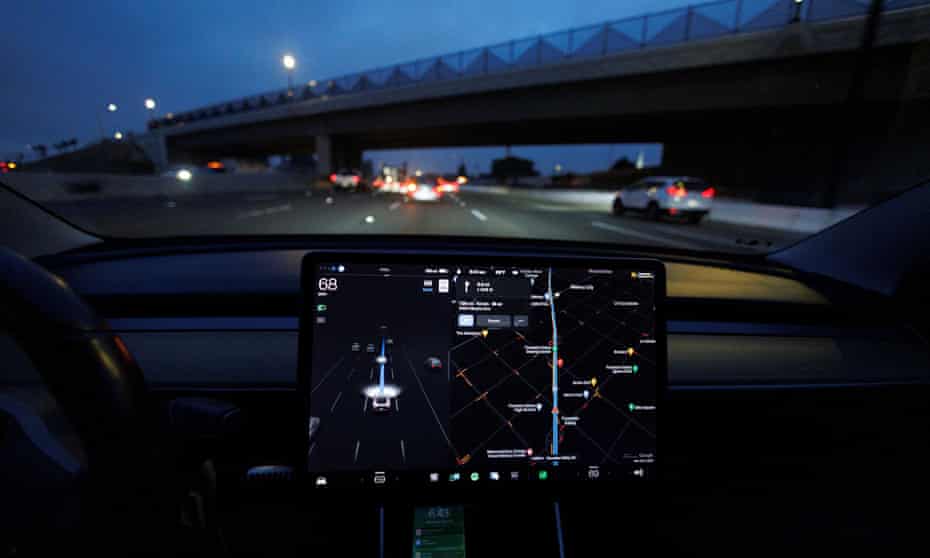Tesla cars on autopilot have stopped on highways without cause, owners report
US regulators investigating hundreds of reports that self-driving models 3 and Y have braked on highways

More than 750 Tesla owners have complained to US safety regulators that cars operating on the automaker’s partially automated driving systems have suddenly stopped on roadways for no apparent reason.
The National Highway Traffic Safety Administration revealed the number in a detailed information request letter to Tesla that was posted on Friday on the agency’s website.
The 14-page letter dated 4 May asks the automaker for all consumer and field reports it has received about false braking, as well as reports of crashes, injuries, deaths and property damage claims. It also asks whether the company’s “full self driving” and automatic emergency braking systems were active at the time of any incident.
The agency began investigating phantom braking in Tesla’s Models 3 and Y last February after getting 354 complaints. The inquiry covers an estimated 416,000 vehicles from the 2021 and 2022 model years. In February, the agency said it had no reports of crashes or injuries.
The letter gives Tesla a deadline of 20 June to respond to the information request but says the company can ask for an extension.
A message was left early on Friday seeking comment from Tesla.
In opening the investigation, the agency said it was looking into vehicles equipped with automated driver-assist features such as adaptive cruise control and “autopilot”, which allows them to automatically brake and steer within their lanes.
“Complainants report that the rapid deceleration can occur without warning, and often repeatedly during a single drive cycle,” the agency said.
Many owners wrote in their complaints that they feared a rear-end crash on a freeway.
In the letter, NHTSA asks for the initial speed when the cars began to brake, the final speed and the average deceleration. It also asks if the automated systems detected a target obstacle, and whether Tesla has video of the braking incidents.
The agency is now seeking information on warranty claims for phantom braking including the owners’ names and what repairs were made. It is also seeking information on Tesla’s sensors, any testing or investigations into the braking problems, or if any modifications were made.
The letter focuses on Tesla’s testing of the automated systems when it comes to detecting metal bridges, S-shaped curves, oncoming and cross traffic and different sizes of vehicles including large trucks. The agency also wants information on how cameras deal with reflections, shadows, glare and blockage due to snow or heavy rain.